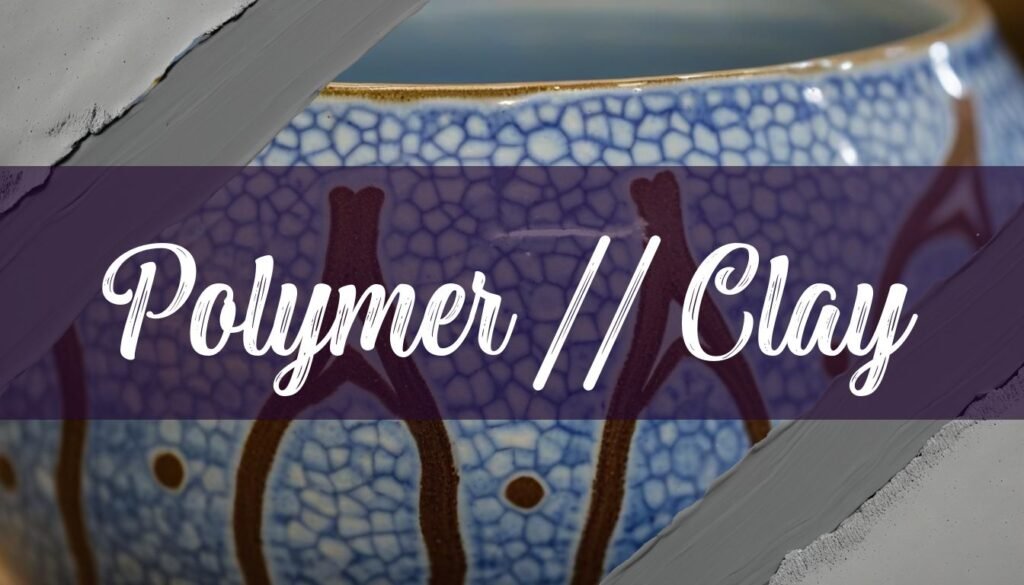For those eager to dive into the colorful world of polymer clay, a crucial first step is knowing where to buy it. Fortunately, there are numerous options available, each offering its own blend of convenience, variety, and price points. Whether you prefer the tactile experience of shopping in a physical store or the vast selection of online marketplaces, understanding your options is key to a successful start. This article will guide you through the most popular avenues for purchasing polymer clay, highlighting the pros and cons of each to help you make the best choice for your crafting needs.
Shopping for Polymer Clay: Your Options
Major craft stores like Michaels and Hobby Lobby are often the first stop for many beginners. These stores offer the advantage of immediate access – you can walk in, browse the selection, and leave with your clay in hand. They typically stock popular brands like Sculpey and Premo, providing a good starting point for those new to the medium. However, the selection may be limited compared to specialized suppliers, and the staff might not have in-depth knowledge of polymer clay. On the other hand, online marketplaces such as Amazon and Etsy provide an extensive range of options, often at competitive prices. Amazon is great for its convenience and fast shipping, while Etsy connects you with independent sellers offering unique and handmade polymer clay creations, as well as a variety of supplies. The downside is that you can’t physically examine the clay before purchasing, and shipping times can vary. Specialty stores and art supply shops are goldmines for polymer clay enthusiasts. These stores typically carry a wider array of brands, including Fimo, Cernit, and Kato, and offer a more comprehensive selection of tools and accessories. The staff are usually knowledgeable and can provide expert advice. While prices might be slightly higher, the quality and variety often make it worthwhile. You might also find some ceramics to paint at these locations. For a comprehensive guide, check out where to buy ceramics near me for more local and online options.
Choosing the Right Polymer Clay Brand
With so many brands of polymer clay available, knowing which one to choose can be overwhelming, especially for beginners. While personal preference plays a significant role, some brands consistently receive high praise from experienced crafters for their quality and reliability. Among the most recommended are Kato, Premo, and Fimo Professional . Kato stands out for its strength after baking and its resistance to fingerprints, making it ideal for intricate projects. It’s also one of the few brands that includes pure primary and secondary colors, perfect for color mixing. I have started making decorative bead garlands using Kato. I condition the clay, use a cutter to get consistency in sizing the beads, use an awl to pierce the hole for stringing. Then I bake it. I am curious if Kato is a good clay to paint on using acrylics. Premo is celebrated for its extensive color range, including a variety of effect colors like opal, glitters, and translucents. It’s a well-loved brand known for its workability and the vibrant results it yields. Fimo Professional is a versatile clay with a firm but pliable texture, making it suitable for almost any polymer clay technique. It’s a great all-around clay, particularly recommended for beginners due to its ease of use and consistent results. While brands like Cernit and Soufflé offer unique qualities, they are often considered specialty clays. It’s generally advised to avoid Sculpey III or any no-name brands, as they may not provide the desired durability and quality. For those interested in making beads, there are numerous guides available, such as how to make pottery beads, which can provide inspiration and techniques applicable to polymer clay as well.
Essential Tools and Baking Tips for Polymer Clay Success
Beyond the clay itself, having the right tools can significantly enhance your polymer clay experience. Essential tools for beginners include a ruler, basic shape cutter sets, an acrylic roller, and a craft knife. These tools will help you shape, cut, and refine your clay creations with precision. A tissue blade set, including straight, flexible, and ripple blades, is invaluable for creating clean edges and textures. A beading awl or handheld pin drill is essential for making holes in beads and pendants. For more advanced techniques, consider investing in a pasta machine, which will save you countless hours of effort in conditioning and rolling out the clay. A basic set of sculpting tools will allow you to add intricate details and textures to your creations. Achieving a successful bake is crucial for ensuring the durability of your polymer clay projects. It’s really important to bake at the correct temperature for your brand of clay. Higher temps WILL burn your clay. Baking LONGER than the package says actually yields a stronger final product. I always err on the side of overbaking versus underbaking. As a general rule, bake your clay at the temperature recommended on the package for the appropriate time, and use a dedicated oven thermometer to ensure accuracy. Baking times typically range from 15 to 30 minutes per 6mm of thickness at 120-130 degrees Celsius (248-266 degrees Fahrenheit). To prevent discoloration or scorching, cover your clay while baking or use a large ceramic tile as a baking surface. After baking, allow the clay to cool gradually in the oven to minimize the risk of cracking.
Protecting and Enhancing Your Finished Polymer Clay Pieces
Once your polymer clay creation is baked, you may want to consider sealing or varnishing it to protect the finish and add shine. While sealing isn’t always necessary, it can be particularly beneficial when using mixed media or surface effects. There are several types of polymer clay sealers available, each with its own advantages and disadvantages. Resin provides a glassy, domed finish that enhances the look of most polymer clay projects. It’s a strong sealer that is unlikely to react with your clay or mixed media add-ins. Gloss varnishes are great for sealing surface effects and give a shiny finish. However, they are notorious for reacting with polymer clay and mixed-media, so you have to take care to use the right one. Matte varnishes provide a natural, almost invisible finish, perfect for preserving the texture of your work. They will dull your colors slightly, so be sure to keep this in mind while creating your design. Wax is quick, simple, and gives your work a beautiful sheen rather than a shiny finish. It’s the best polymer clay sealer to use if you want to perfectly maintain the texture of your work. While liquid clay can be used as a sealer, it’s generally not recommended due to its expense and the hassle involved in achieving a good finish. When choosing a sealant or varnish, it’s essential to select one that is compatible with polymer clay and won’t become sticky or yellow over time. Varathane Gloss Floor Finish is a popular gloss varnish that is water-based and crystal clear. Liquitex Professional Matte Varnish is a highly recommended matte varnish that gives a true matte finish. PYM2 is the only spray-on varnish currently on the market that is compatible with polymer clay. It’s especially good to use on beads with a pronounced texture, where brush-on varnishes tend to cause pooling.





